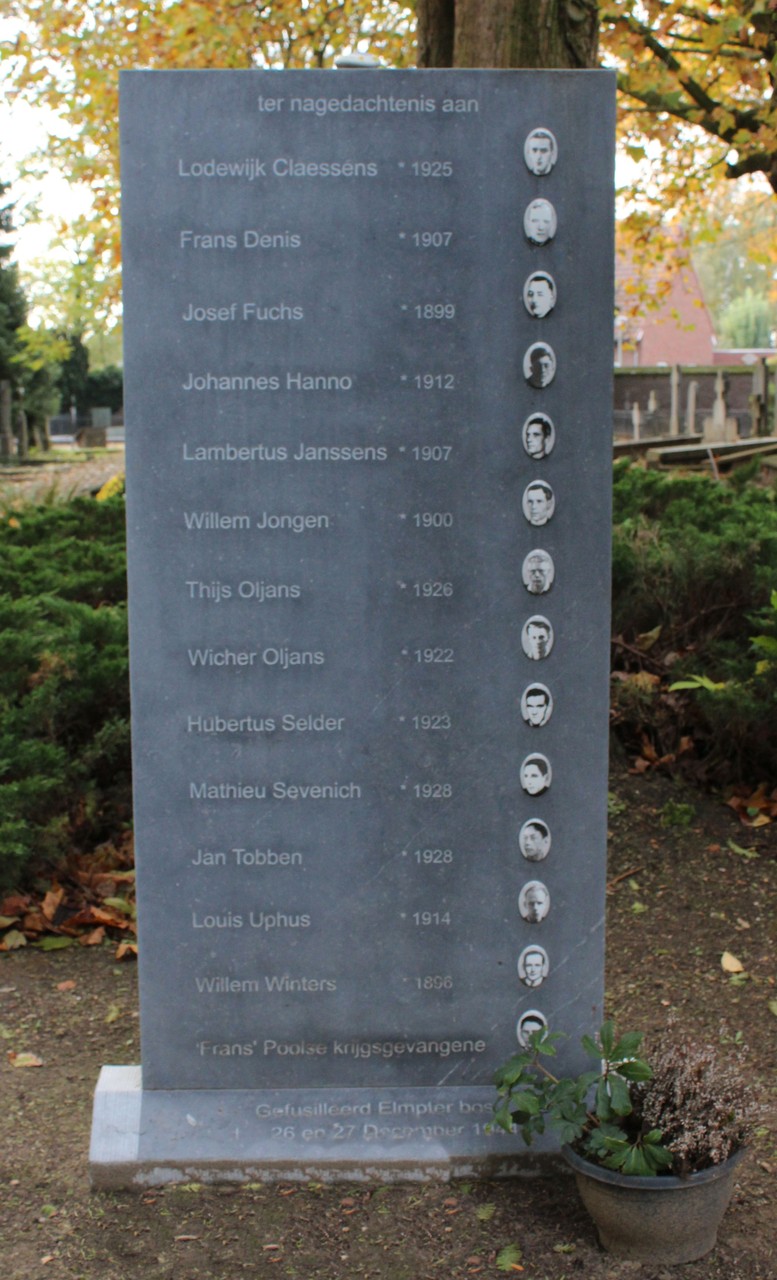The fourteen men were shot because hardly anyone had obeyed the order given by battalion commander Ulrich Matthaeas that all men aged between 16 and 60 had to report for forced labour in Germany before 18 December 1944. After the announcement of the executions, more than 2700 Roermond residents came forward. On 30 December 1944, they went on foot to Germany to be deployed in the Ruhr region, which was ravaged by constant Allied bombing.
On the instructions of a German soldier who had been involved in the massacre, the mortal remains were found at the German border town of Niederkrüchten on 26 August 1947 and taken to the town hall of Roermond on 11 September 1947. From there, an impressive cortege accompanied the flower-strewn coffins to the Old Churchyard, the cemetery near the Kapel in ’t Zand church. In 1950, the mortal remains were transferred and reburied at the War Monument in Tussen de Bergen, the new, general cemetery. The place in the Old Churchyard where they had been buried together with other war victims remained empty until September 2020.
